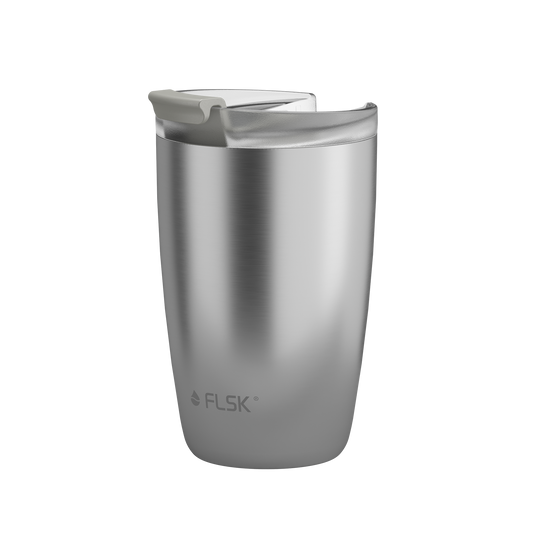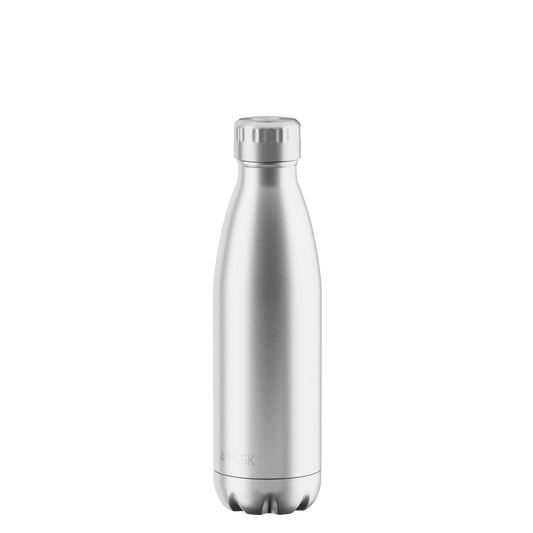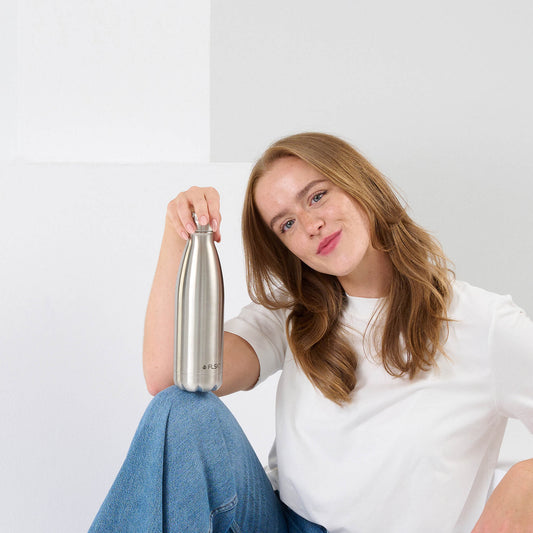Is 24,000 kilometers environmentally friendly?

-
FLSK products are transported up to 24,000 kilometers from China to Munich by ship and train.
-
Old cooking oil replaces dirty ship fuel and reduces CO2 emissions to zero.
-
We will compensate for train transport emissions through climate protection projects in the future.
It takes several weeks for your FLSK product to reach you. On their long journey to Munich, FLSK and muki travel up to 24,000 kilometers. Is that really necessary? Currently, we cannot avoid this long distance. The reason is that our products are manufactured in Zhejiang Province, China produced. But what does the long transport route mean for the environment?
By ship and train to Munich
To move goods from A to B, there are various transport options: airplane, truck, ship, or train. When considering the climate-damaging CO2 emissions*, the ship performs best here – closely followed by rail transport. Trucks and especially air logistics are far behind**. Therefore, we transport our products half by ship and half by train to Germany. A small part remains by air freight. If we need to deliver quickly, we occasionally use the plane. But even though we mostly use less polluting means of transport, climate-damaging emissions are still released.

With old cooking oil across the oceans
For the waterway, we work with the GoodShipping Initiative*** from Amsterdam. Instead of dirty ship diesel or heavy oil, the container ships are fueled with fuel based on old cooking oil****. As a result, our CO2 emissions have been reduced to zero since 2020. Container ships also emit soot particles and other pollutants. These are also significantly reduced or completely eliminated by the innovative replacement.
"CO2-neutral" rail transport
Currently, there is no way to directly reduce emissions for container trains. The transport route is almost entirely electrified, but the electricity is supplied by the countries traversed. The proportion of green electricity in these countries is low: the longest route runs through Russia, with a green electricity share of just 18 percent (2019). Additionally, maintaining the long railway line and container trains consumes more energy. Therefore, we will offset the resulting CO2 emissions through certified climate protection projects from 2020 onwards. You can learn more about this in our article on CO2 footprint.
Our transport mission: More is less
The logistics sector accounts for only about 7 percent of our company emissions. Nevertheless, we want to get better.
Since we have a direct influence on fuel use in the waterway, we have now increased our ship transport share to 98%. A step, together with the GoodShipping Initiative, to promote clean container shipping. This shows that there are sensible alternatives to dirty ship fuel.
Update 2022
By using biofuel oil, we were able to save 37.59 tons of CO2 through sea freight transport in 2021. This joint reduction of CO2 was also confirmed by the GoodShipping Initiative.
* Whenever we talk about CO2, we mean CO2e. In addition to CO2, methane or nitrous oxide, for example, also act as greenhouse gases – but in different forms of intensity. Converting to CO2 equivalents, or CO2e, standardizes the climate impact.
** Background information on CO2 emissions from different modes of transport can be found here.
*** The cover image shows Janne from the GoodShipping Initiative refueling a container ship with environmentally friendly biofuel.
**** GoodShipping mainly uses biofuels based on old cooking oil. In addition, research is being conducted into how other waste products can be used for fuel production. One option is tall oil, a waste product from the paper industry.
- Engraveable.
FLSK coffee cup
350 ml · stainless - all natural
- Engraveable.
FLSK drinking bottle
500 ml · stainless - all natural
- Engraveable.






